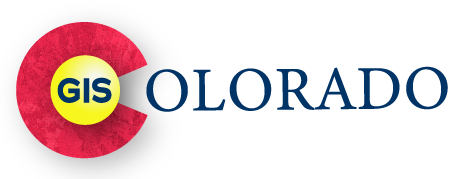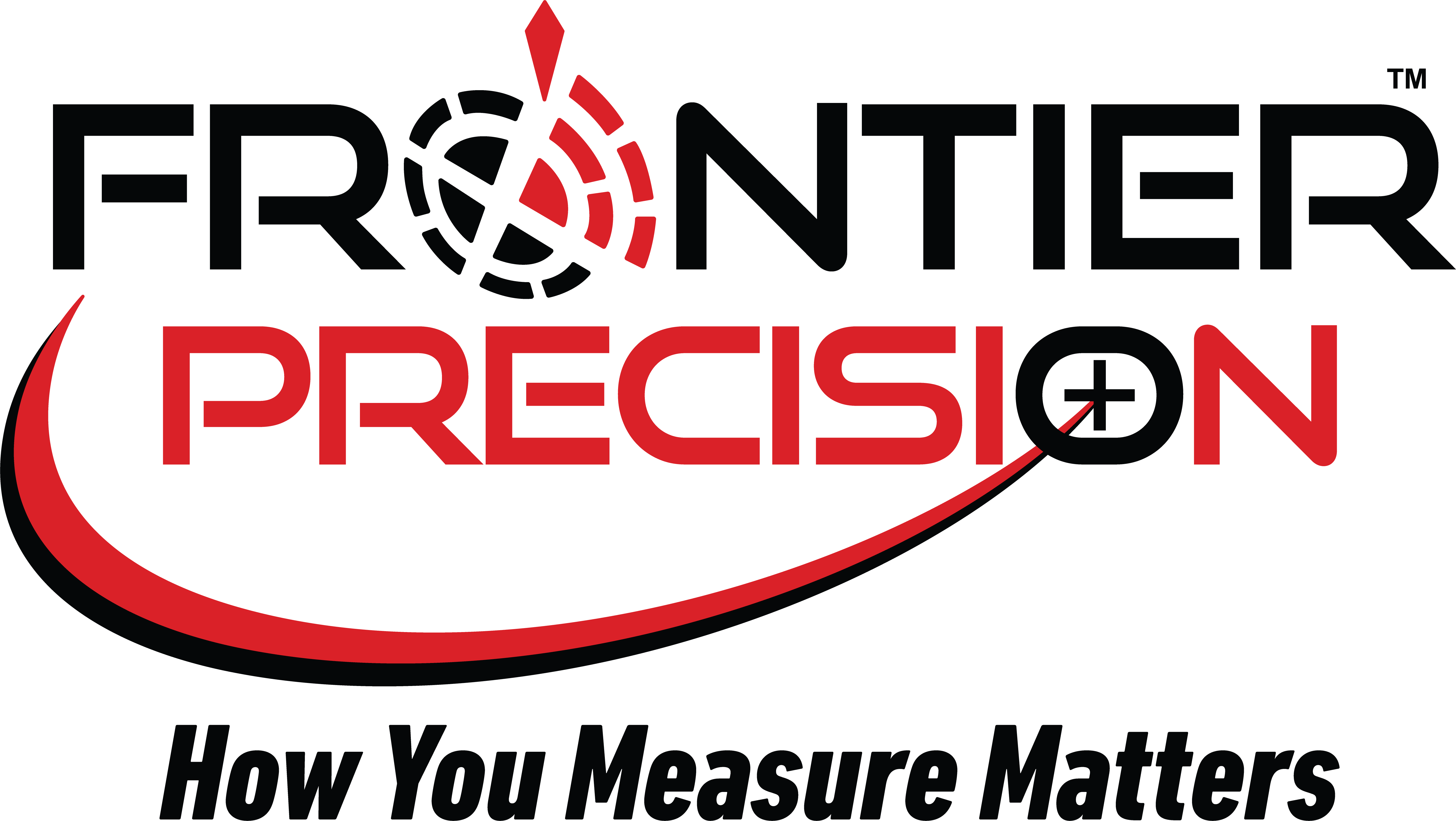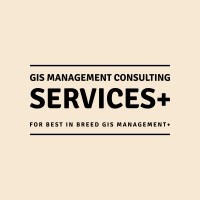Thank you to all those who sent in their submissions to this contest. We had so many excellent entries, and it was really a pleasure to see all the creativity and passion that went into all the submissions.
Become a member and join the listserve to get announcements about the next GIS Colorado Mapping Contest!

Student Map Section
Josh Bruning
Undergraduate Certificate
Front Range Community College
Student Artistic Section
Amanda Hastings
Master’s Degree in Forest Sciences, Emphasis on GIS
Colorado State University
Student App Section
Ronney A. Phillips
Bachelor’s Degree, Geography and the Environment
University of North Texas

Pro Map Section
Alison DeGraff Ollivierre
Director/Senior Cartographer, Tombolo Maps & Design
Pro Artistic Section
Alison DeGraff Ollivierre
Director/Senior Cartographer, Tombolo Maps & Design
Pro App Section
David Hood, Jackson Trappett
David is a GIS Analyst/Drone Program Coordinator for the City of Grand Junction
Jackson is an IT Engineering Manager for the City of Grand Junction

Peoples’ Choice
Mark Bellncula
Undergraduate Certificate in Geographic Information Systems
Colorado Mountain College
Student Section
This section is for individuals enrolled in or within one year post graduation from a certificate, undergraduate, or graduate program in GIS or related field.
Student Map Category
Maps are stand-alone images and analytical in nature. The integration of data is a key component of the project. This category recognizes achievement in cartographic representation through creative, effective, beautiful, and insightful integration of geospatial data.
Analysis of Human Mobility in Lubbock City During Pandemic
Gisou Salkhi Khasraghi
Doctoral Degree, Land Use Planning Management Design
Texas Tech University
“Human mobility is a major topic of research in geography, particularly during a period of transition (COVID 19 pandemic) in the link between global lock-down and mobility. The main question of this research project is that during a COVID pandemic (specifically in the first days of 2021), where peak human mobility occurred in Lubbock.”
Arizona Trail Map
Glenn Ingram
MS of Urban Planning, CAPLA
University of Denver
“This project began in a GIS for Urban Planning course, where students utilized raster data to complete assignments. For this map, rasters were mosaiced into the shape of Arizona, and an oblique hillshade tool was used to change its perspective. Land cover data was to complete the relief, and data related to the Arizona Trail was then added. The intended audience of this map is the general public, with the hope of illustrating the topography and terrain of the state of Arizona and its long-distance trail.”
Glacier National Park – August 2013 vs. August 2020
Kayla Turner
Undergraduate Certificate in Geographic Information Systems
Colorado Mountain College
“This map shows the change in Normalized Difference Glacier Index (NDGI) in Glacier National Park, Montana from August 2013 to August 2020. Glaciers in the park have melted at an alarming rate; with only 25 remaining from a once documented 150. I created this in ArcGIS Pro using Landsat 8 OLI/TIRS (Operational Land Imager and Thermal Infrared) imagery from USGS Earth Explorer. Both satellite images are 30 m resolution and were taken NADIR, during the day, with a cloud coverage of less than 10%. NDGI is used to help detect and monitor glaciers by using the green and red spectral bands. The formula for this is NDGI= (NIR-Green)/(NIR+Green). In Landsat 8 imagery, this converts to (Band 3-Band 4)/ (Band 3+Band 4). I did this using the raster calculator and then did an extract by mask with the park boundary. The ranges shown here are between –1 and 1; with 1 showing the high probability that glaciers are present and –1 showing their absence. This map is intended to show that the glaciers are melting rapidly, whether it is due to natural or human-caused climate change. The target audience would be environmentalists and scientists who have concern for adaptation and the ecosystem of the national park, along with the general public of anyone interested in seeing the remaining glaciers before they are gone forever.”
Hayman Fire Recovery
Lucy Kepner
Undergraduate Certificate, Geographic Information Systems
Colorado Mountain College
“We often talk about the devastation of wildfires and how the landscape is changed by them. I wanted to investigate the recovery from wildfires. We may be able to perform mitigation to prevent some wildfires, but we also need to prepare for the recovery from wildfires. The Hayman Fire started on June 8, 2002 and was contained on July 18, 2002. It was human-caused. 138,114 acres burned including 133 homes. Landsat 7 data is available for this time. Data was retrieved from USGS Earth Explorer from Post Fire (7/2/02) and 5 years after the fire (7/1/07) to evaluate the recovery of the forest. Landsat 7 data is projected in WGS 1984 UTM Zone 13N. Normalized Difference Vegetation Index (NDVI) was calculated using the raster calculator in ArcGIS Pro with the Red and NIR bands from the Landsat 7 data. On Landsat 7, the Red band is Band 3 and the NIR band is Band 4. The equation is 𝑁𝐷𝑉𝐼 = (𝑁𝐼𝑅 − 𝑅𝑒𝑑) (𝑁𝐼𝑅 + 𝑅𝑒𝑑). Data was classified and manual breaks were made near the recommended Jenks breaks in the data. Both maps show identical classes for the data. The surrounding area is recovering and the NDVI is improving shown by green (healthy vegetation) and yellow areas where previously there was red (unhealthy vegetation). As you can see, the Landsat 7 data after the fire has missing data characterized by the striped appearance. The satellite started sending this data after the scan line corrector on the satellite failed on May 31, 2003, less than a year after the fire.”
How Do We Play in Lake County
Michelle Walker
Undergraduate Certificate in Geographic Information Systems
Colorado Mountain College (Leadville)
“This is a map I made as part of my Field Study course. I am working with the Leadville Tourism Department to visualize some of their data. They want to know what tourists are doing in Lake county. I assigned the different activity percentages different label symbology to make a fun and simple representation of the data.”
Investigating Drought Conditions within California Park on the Routt National Forest
Chelsea Johnson
Undergraduate Certificate in Geographic Information Systems
Colorado Mountain College
“Normalized Difference Drought Index (NDDI) incorporates analyzing vegetation health and soil moisture content to create an index that predicts drought conditions. Landsat 8 data were collected from 2013 and 2021 to create indexes that measure vegetation greenness and soil moisture content that were then used to create the final NDDI. With worsening drought conditions occurring across the west, being able to detect the areas that are being most affected can help create better management plans. This map was created to help guide restoration efforts with the Forest Service in an area that has been severely affected by drought. California Park is managed as a Special Interest Area (SIA), has rich history in agriculture, and is home to many unique species in northwestern Colorado, making it an important place to conserve. This map is currently being used to help inform placements of passive restoration structures to aid in wet meadow restoration that will help retain water, slow erosion, and improve habitat for the many sensitive species that occur within California Park on the Routt National Forest. Preserving and restoring these sensitive ecosystems can help curb some of the negative effects from climate change while also conserving our natural heritage.”
Moab, utah shown in different band combinations
Carly Koppe
Undergraduate Certificate in GIS
Fort Lewis College
“This map is of the town Moab in Utah. The purpose of this map was to upload NAIP Imagery and how manipulation of band combinations can highlight areas of interest. It was created by uploading the specific area of interest into ArcGIS Pro then created four different maps showing: normal band combination, false color NIR, and then two that I created. The target audience is researchers who are interested in seeing how manipulation of different band combinations can help us better identify water, vegetation, or other areas of interest. I created this map for Remote Sensing class at Fort Lewis College. But I picked the Moab area because I enjoy traveling there and it works well to show how different band combinations can help show different vegetations.”
Mount Rainier (Tahoma, Tacoma) Glacier Retreat 2016 vs. 2021
Joe Tayabji
Undergraduate Certificate in Geographic Information Systems
Colorado Mountain College
“This map depicts the change in Normalized Difference Snow Index (NDSI) of Mt. Rainier (aka Tahoma, Tacoma, or Tacobet) from 8/12/2016 to 8/10/2021. According to the USGS, “[NDSI] is the normalized difference between green (G) spectral bands and the shortwave infrared (SWIR).” For Landsat 8, NDSI is calculated as (Band 3 – Band 6) / (Band 3 + Band 6). This gives a possible range of -1 to 1; a value closer to 1 indicates a higher probability of the presence of snow. ArcGIS Pro was used in the creation of this map, along with Landsat 8 imagery (30 m resolution) from the USGS EarthExplorer. The Raster Calculator tool was used to create the final product. One limitation is that this map shows one date to represent each year; ideally a whole season would be summarized for comparison. This map is aimed for environmentalists and policymakers, as it shows a major effect of a changing climate. Mt. Rainier was chosen as the study area because it is visible from one of the major population centers in the United States, so changes are seen by many.”

Winner of the Student Map Category!
Overnight Tornado Threat
Josh Bruning
Undergraduate Certificate
Front Range Community College
“My map came as an idea somewhat related to a project back in a class, Intro to GIS, where I worked with the available Storm Prediction Center data then. More recently, I started making maps for fun, at first just in ArcMap, and using different data that was mostly weather focused. This is one of those looking specifically at tornadoes happening overnight. Really think it’s an important theme to show because of how much more difficult and dangerous tornadoes are at night. I made this in ArcGIS Pro and utilizing the vector tornado paths data as a layer of focus. I then did a kernel density raster with the tornado point data to help visualize areas most impacted. The target audience would be those in the meteorological community, weather enthusiasts and general public.”
Student Artistic Category
Artistic maps celebrate achievement in cartographic representation through experimental map-making practices, innovative visual expression of geographic concepts, and artistic interpretation of cartographic forms using any type of physical and/or digital media.
41n74w
Scott Corey
Graduate Certificate in Geographic Information Systems
Denver University
“This is an artistic representation of a complex roadway in New Jersey (near the Newark Airport). I began with road centerlines overlaid on top of aerial photography and then offset and modified the single centerline to represent each lane of roadway and how they all interact. Then I brought these lines into Adobe Illustrator to create the effect of depth using variable line weights. I have a series of these maps that I’ve used to understand the complexities and beauty of major road interchanges.”
Evolution of Migratory Bird Maps
Phil Harrison
Master’s Degree in Hydroecology
University of Northern Colorado
“This is an educational poster showcasing the evolution of migratory bird maps over time & technique for students & professionals. It was inspired by UNC classes in EDUCATIONAL TECHNOLOGY 628, GIS, Biol & Earth Sci Seminars & my life as an biological gypsy, agency ecologist & field ecologist extraordinaire from Oklahoma to Alaska & in-between. In my current incarnation I am the Man from UNCO & a protégé of Dr. Scott Franklin, UNC Professor extraordinaire & deeply disturbed dyslexic forester/plant ecologist with 2 PhDs. Its an artform practiced by scientists & specialists alike.”

Winner of the Peoples’ Choice Award!
The Race to the Clouds – 100th Running of the Pikes Peak International Hill Climb
Mark Bellncula
Undergraduate Certificate in Geographic Information Systems
Colorado Mountain College
“As an auto racing fan I wanted to update the map for the 100th running of the Pikes Peak International Hill Climb. I created this unofficial commemorative map that is spectator focused, as opposed to the official map which is driver focused and upside-down. This map is oriented to the north and shows the dangerous terrain that the race course is on. This map uses publicly available data as well as data from the USDA. ArcGIS Pro and Adobe Photoshop was used to create this map.”
Methodist Mountain Trail Map
Lucy Kepner
Undergraduate Certificate in Geographic Information Systems
Colorado Mountain College
“This is a map of the Methodist Mountain Trails that are part of the Salida Mountain Trail network in Salida, Colorado. These trails are south of town and are a great place to build your skills as a beginner mountain biker or have a fun ride as an experienced mountain biker. The trails are also open to hikers and equestrians. A previous map of this area is oriented with North showing as up. This orientation is confusing to some users because when you look at the map as it is mounted to the sign, trails to your left on the map, are actually to your right. To solve this problem, I changed the orientation to make North showing as down. I also added a few arrows showing some of the fun downhill routes. It’s always nice to know the preferred direction of a trail before you ride.”

Winner of the Student Artistic Category!
Sonoran Desert Borderlands
Amanda Hastings
Master’s Degree in Forest Sciences, Emphasis on GIS
Colorado State University
“This map was created for Dr. Jared Orsi’s book (anticipated publication 2023) about the history of Quitobaquito Springs— a desert oasis on the border between Mexico and Arizona and nested within Organ Pipe Cactus National Monument. Congruent to the book audience, this map is intended for those who seek knowledge about restoring lost historical presence of Native peoples, US-Mexico borderlands history, and environmental preservation. This map illustrates the places, boundaries, and corridors that have shaped the story of Quitobaquito Springs. Dr. Orsi (from the Department of History at Colorado State University) was seeking a style that mimicked historical cartography for publication in black and white. I utilized ArcGIS Pro to combine data for land and cultural features from both historical and modern eras. I completed this work as part of my graduate internship with the Geospatial Centroid at Colorado State University.”
Student Apps Category
Apps are generated using interactive applications that may be consumed on a desktop or mobile device, such as a web mapping application, native app or Esri Story Map. This category recognizes achievement in cartographic representation through creative, effective, beautiful, and insightful uses of geospatial data in a dynamic and interactive application.

Winner of the Student App Category!
Building a low-cost air quality sensor network
Ronney A. Phillips
Bachelor’s Degree, Geography and the Environment
University of North Texas
“This project was created out of the frustration of few air quality sensors in Denton County, Texas, home of the University of North Texas. Denton County only has one EPA-approved air quality monitor for the county — how will citizens truly know the qualities of their air? Here, we propose a low-cost alternative to expensive EPA monitoring. The intended audience are the citizens of Denton County, Texas, or any individual with an interest in air quality monitoring. The maps were created in ArcGIS Pro and further enhanced in ArcGIS Online. Our research is ongoing, and we are currently placing low-cost monitors throughout Denton County, Texas, to further understand spatiotemporal air quality change.”
Professional Section
Open to GIS professionals that are current GISCO or WyGeo members, and Elevations Geospatial Summit attendees and presenters.
Professional Map Category
Maps are stand-alone images and analytical in nature. The integration of data is a key component of the project. This category recognizes achievement in cartographic representation through creative, effective, beautiful, and insightful integration of geospatial data.

Winner of the Professional Map Category!
Bicknell’s Thrush migration
Alison DeGraff Ollivierre
Director/Senior Cartographer, Tombolo Maps & Design
“‘Bicknell’s Thrush Migration’ was created in response to the Birds of Vermont Museum’s Call to Artists with the topic ‘Borders: Illusions that Constrain Us’ (and accepted for the exhibit) through collaboration with the Vermont Center for Ecostudies who generously shared their geospatial data and gave permission for it to be published on the map. It was created using Adobe Illustrator and Avenza MAPublisher and I was particularly excited to create this map because I’m (originally) a Vermonter who works on bird conservation in the Caribbean.”
Poudre River Urban Corridor – Important Bird Area Addition of the Environmental Learning Center
Justin Hollis and Josh Rostek
Justin is seeking a Bachelor’s Degree in Ecosystem Science and Sustainability
Colorado State University
Josh Rostek
“In collaboration with Colorado State University, the City of Fort Collins Parks, Natural Areas and Audubon Society, the Poudre River Important Bird Area is a designation of parcels owned by the City and Colorado State University to be conserved and managed as important bird habitat for seasonal and perennial bird species. As a recent contribution, Colorado State University donated the Environmental Learning Center to the Important Bird Area. This map is an education tool that can be used in understanding where important bird habitats are located in Fort Collins, encouraging curiosity to visit these areas and join in advocating for more natural areas to be managed for bird habitat. We would like to thank all organizations involved, including the CSU Geospatial Centroid for dedicating resources for this project, and most importantly, the collaboration between Justin Hollis and Joshua Rostek, for allowing this idea come to fruition.”
Professional Artistic Category
Artistic maps celebrate achievement in cartographic representation through experimental map-making practices, innovative visual expression of geographic concepts, and artistic interpretation of cartographic forms using any type of physical and/or digital media.

Winner of the Professional Artistic Category!
Calypso Cartography
Alison DeGraff Ollivierre
Director/Senior Cartographer, Tombolo Maps & Design
“The first time I heard this calypso song I knew I had to map it. The whole piece is a witty play on words using place names across the country of Saint Vincent and the Grenadines in the Eastern Caribbean (where I have lived on and off since 2011). The creation of this map was entirely for fun, challenging me to accurately transcribe and deconstruct the place names from the lyrics (which are in Vincentian dialectal English) and then research and locate each place—many of which required manually searching through old paper maps and asking local government officials.”
Protect the Adelaide
Kyle Walsh
Conservation Director
The Land Conservancy of San Luis Obispo County
“This webmap and website were developed to share the importance of protecting the Adelaide region in northwest San Luis Obispo County for wildlife conservation throughout California’s Central Coast.”
Professional Apps Category
Apps are generated using interactive applications that may be consumed on a desktop or mobile device, such as a web mapping application, native app or Esri Story Map. This category recognizes achievement in cartographic representation through creative, effective, beautiful, and insightful uses of geospatial data in a dynamic and interactive application.
Kendrick Pool – Public Involvement using GIS
Jason Boucher
GIS Group Lead, Interstate Engineering
“The public Involvement plan for the Kendrick Pool in Sheridan, Wyoming had many components to it. The GIS Component helped facilitate a platform for public involvement that would target 18 – 40 year olds. It consisted of a Hub Site that was home to a host of data and apps that were designed to convey and gather information to and from the public in a web accessible format. The work was done in conjunction with the 30% Engineered Design of the pool for the City of Sheridan.”
Parcel Drafter Implementation
Sam Montoia
GIS Analyst
Archuleta County
“This app allows the user to plot legal descriptions and match them to Archuleta County’s parcel data and PLSS. It was built in ESRI’s WebApp Builder and implements their Parcel Drafter tool. The user can enter their metes and bounds legal description calls, or simply click the corners of boundary to get approximate measurements of angles and distances. The user is empowered to enter Reception/Document numbers to track their polygons and descriptions. Users are also able to edit previously drafted polygons using the parcel drafter tool. Upon saving, and if the traverse closes within a tolerance of 5 ft, the tool creates a purple polygon and embeds the document information as added by the user.”
Speedgoat Race Tracker
Dara Seidl
Associate Professor of Geographic Information Systems
Colorado Mountain College
“The Speedgoat Race Tracker is a map application for athletes to share race day progress with friends and family. The map displays phone GPS location along the race course via push notification using an app called Overland GPS Tracker. The map is coded using Leaflet and the leaflet-elevation plugin to show connectivity between the race route and and an elevation profile. Spectators can spot the current location of their favorite runner on the long race day and how much of a climb may be left to go. I created this map to track an upcoming trail race of mine and share the status with loved ones afar. This map is intended for desktop web viewing.”
The Yampa is Warming; How Trees Can Help
Nicole Pepper
Geospatial Analyst for Sustainability and Climate Applications
Yampa Valley Sustainability Council
“This piece tells the story of how trees can be a solution to a major challenge that the Yampa River is facing: its diminishing flows and warming temperatures, particularly in the hot summer months. This story map is a tool to educate the public about the Yampa River Forest Restoration Project, in partnership with Yampa Valley Sustainability Council, Colorado State Forest Service, and the City of Steamboat Springs. The maps generated for this project will be used to help plan reforestation projects in the years to come.”

Winner of the Professional App Category!
Unaweep Canyon – 3D Climbing Routes
David Hood, Jackson Trappett
David is a GIS Analyst/Drone Program Coordinator for the City of Grand Junction
Jackson is an IT Engineering Manager for the City of Grand Junction
“Unaweep Canyon – 3D Climbing Routes tells the story of a group of climbing routes developed by Bob and Lisa Eakle, and a project to create 3D maps of those routes to help climbers plan their ascents. It is a web based storymap, designed to be viewed on a desktop computer or tablet.”
San Miguel County Redistricting Story Map
Heather Widlund
GIS Director, San Miguel County, Colorado
“This ArcGIS Story Map Collection was created for our 2021 commissioner redistricting. The purpose was to explain the redistricting process and display the three reapportionment options I developed for the commissioners to review. The audience was the general public and the county commissioners, and it was intended to be viewed on desktop browsers, although it does work on mobile devices. I used the Story Maps platform to create 5 separate stories with various integrated maps and apps, then gathered them in a collection, along with two companion apps.”
Judges
Our judges represent a wide variety of backgrounds, including education, software development, environmental science, public sector, and Esri.
Steven Hick, GISP
GIS Director and Professor of the Practice in Geographic Information Science, Department of Geography and the Environment at the University of Denver
Steven Hick, GISP, is the GIS Director and Professor of the Practice in Geographic Information Science in the Department of Geography and the Environment at the University of Denver. For over twenty-seven years Steven has been directing the Geographic Information Science academic and research facilities in the department. Steven is currently the Director of the GIS Certificate Program and the Master of Science degree program in Geographic Information Science at the University of Denver. He was instrumental in the creation of one of the nation’s first Master of Science degrees in Geographic Information Science. For nearly fifteen years, Steven taught crime mapping and analysis at the University of Denver in the Crime Mapping and Analysis program under the auspices of the US Department of Justice, National Institute of Justice. He continues to provide crime mapping and analysis technical assistance to law enforcement agencies across the country.
Shelby Hines
Senior Solution Engineer, Esri
Shelby is a Solution Engineer at Esri and supports Colorado and New Mexico local governments in applying GIS technology across domains. She brings 15 years of experience in GIS and emergency management and has a MS in GIS from the University of Denver.
Heidi Ragsdale, M.A.Ed
STEM and GIS Educator Professional Development Trainer at Grand Junction MakerSpace
With 20 years in public education, I have worked to blend STEM and GIS technologies, to support professional development for Earth-centered problem based learning. I enjoy GeoArt, all things geography, Astronomy, Environmental advocacy and outreach.
Seth Frame
GIS Supervisor/Analyst, Tyler Technologies
Raised in the Middle West, Seth Frame has over a decade of experience in GIS; most of that time has been spent in cultural resource management. In a previous life, he performed GIS services for archaeological companies in the intermountain West, he now lives in upstate New York where he is employed as a GIS Supervisor/Analyst for a software development company. Seth has a Bachelor of Arts degree in anthropology from Colorado State University and is a graduate of the University of Wisconsin-Madison’s Cartography and Web Mapping Masters program.
Sarah Marie Kelly
Teaching Assistant Professor, University of Colorado – Boulder
For nearly 5 years I have been sharing my love of maps and GIS with students at CU-Boulder. Prior to that, I spent more than a decade working as an environmental scientist focused on wetland ecology in the Southeast, Midwest, and Pacific Northwest.
Mary Lackner, GISP, PMP
GIS and Technology Manager, Pitkin County, Colorado
Mary has spent the past 30 years working with GIS technology in the public sector. She is currently a technology manager at Pitkin County, CO where she works with people and processes and longs for the days when mapping was the focus of her position. Mary earned her undergraduate degree from the University of Hawaii, Manoa majoring in Resource Planning and a certificate in Marine Science and she obtained a master’s degree from UCLA in Urban Planning.
What is a work of cartography, application of GIS, or similar that has influenced your GIS career?










































